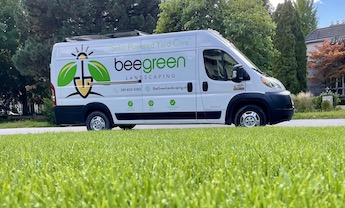Thinking about giving your lawn a quick facelift? You might be tempted to lay new sod over your existing grass, hoping for an easy fix to those patchy, worn-out areas. It sounds like a straightforward solution, but there’s more to it than meets the eye.
Before you roll out that fresh turf, it’s crucial to understand the pros and cons of laying sod over existing grass. This approach can save time and effort, but it’s not without its challenges. To ensure your lawn remains healthy and vibrant, let’s dive into what you must consider.
Benefits of Laying Sod over Existing Grass
When you’re looking to revitalise your lawn quickly, laying sod over existing grass presents a viable option that comes with several advantages. Understanding these benefits can help you decide if this method aligns with your gardening goals.
Immediate Transformation: One of the most compelling reasons to opt for laying sod over existing grass is the instant change it brings. Unlike seeding, which requires patience as you wait for germination and growth, sod provides an immediate lush, green lawn. This instant transformation enhances the aesthetics of your outdoor space and increases property value.
Soil Erosion Prevention: Sod has a mature and established root system that can help in stabilizing the soil underneath. When laid over existing grass, it acts as a barrier against soil erosion caused by wind and rain. This is particularly beneficial in areas prone to losing topsoil, ensuring your garden remains intact.
Weed Suppression: Laying sod can significantly reduce weed growth in your yard. The thick mat that sod forms once established creates a challenging environment for weeds to penetrate. While it’s not a foolproof solution for eliminating weeds, it reduces their numbers, making lawn maintenance easier.
Time and Effort Savings: Opting to lay sod over your existing lawn saves you the time and effort required to remove the old grass and prepare the soil anew. This direct method simplifies landscaping, enabling you to enjoy a revitalized lawn without the exhaustive labour typically involved in ground preparation.
Remember, while laying sod over existing grass offers numerous advantages, it’s crucial to assess the condition of your current lawn and soil before proceeding. Ensuring that your yard can sustain the new sod is key to achieving a long-lasting, vibrant lawn.
Potential Issues to Consider

When considering sodding over existing grass, it’s crucial to be aware of potential issues that could compromise the health and longevity of your new lawn. Understanding these challenges is essential for ensuring your effort results in a lush, vibrant lawn.
Insufficient Root Contact: One of the most significant risks of laying sod over existing grass is the potential for inadequate root-to-soil contact. The existing grass can create a barrier between the sod roots and the soil beneath, hindering the sod’s ability to establish a robust root system. This can lead to poor root development, making your new lawn susceptible to drought and disease.
Decomposition and Thatch: As the old grass beneath the sod decomposes, it can produce a layer of thatch. Thatch is a dense layer of organic matter that can prevent water, nutrients, and air from reaching the sod roots. This can severely impact the health of your lawn, leading to yellowing, patchiness, and in extreme cases, lawn failure.
Drainage Issues: Another concern when laying sod over old grass is the potential for altered drainage patterns. The layer of existing grass can impede water infiltration, leading to waterlogging or uneven water distribution. This can stress the new sod, making it more prone to disease and pest infestations.
To mitigate these potential issues, proper preparation is key:
- Remove as much of the existing grass as possible to ensure direct contact between the sod roots and soil.
- Aerate the soil before laying the sod to improve water and nutrient penetration.
- Choose the right type of sod for your soil and climate to ensure optimal growth and resilience.
By being mindful of these challenges and taking the appropriate steps to address them, you can enhance the success of your sodding project and enjoy a beautiful, healthy lawn for years to come.
Preparation Steps for Laying Sod on Existing Grass

Before embarking on the journey of laying sod over existing grass, it’s crucial to follow a set of preparation steps to ensure the success and longevity of your lawn. These steps will help mitigate the challenges associated with poor root contact, thatch formation, and drainage issues previously discussed.
Assess Soil Health and Grass Type:
Firstly, assess the health of the soil beneath your existing grass. Soil that’s too compacted or lacking in nutrients will need attention before proceeding. Similarly, understand the type of grass you currently have and whether it’s conducive to having sod laid over it.
Remove Debris and Mow Low:
Starting with a clean slate is key. Remove any debris, stones, or large impediments from your lawn. Then, mow your existing grass as low as possible. This reduces competition for nutrients and makes it easier for the new sod’s roots to penetrate the soil.
Aerate the Soil:
Aerating the soil is a crucial step. It not only improves soil structure but also facilitates better root contact for the new sod. By aerating, you’re creating channels that help roots grow deeper and stronger, enhancing the overall health of your lawn.
Apply a Starter Fertilizer:
Applying a starter fertilizer specifically designed for new lawns can provide essential nutrients that will help your new sod establish more quickly. Choose a product that’s compatible with both your existing grass and the new sod.
| Key Action | Purpose |
|---|---|
| Assess Soil and Grass | Ensure compatibility and address soil health |
| Remove Debris, Mow Low | Clear the way for sod installation |
| Aerate the Soil | Improve root contact and soil structure |
| Apply Starter Fertilizer | Provide essential nutrients for growth |
By meticulously preparing your lawn for the new sod, you’re setting the stage for a lush, healthy ground cover that’ll stand the test of time. Proper preparation addresses many problems upfront, making the transition smoother and more successful.
Maintaining a Lawn with Sod Over Existing Grass

After laying sod over existing grass, consistent maintenance is critical for ensuring its healthy integration and growth. While sod provides an instant green look, it requires care and attention to fuse with the underlying grass and soil properly. Here’s what you must focus on in the weeks and months following installation.
Watering is your first priority. In the initial two weeks, keeping the sod moist is vital for root establishment. Aim for watering twice a day, preferably in the morning and late afternoon to minimize evaporation. As the sod begins to take root, gradually reduce watering to encourage deeper root growth.
Mowing plays a crucial role too. Avoid mowing the lawn immediately after laying the sod. Wait until the sod is firmly rooted and reaches a height of about 3 inches before the first cut. This prevents the sod from being pulled up by the mower. Use a sharp blade and do not cut more than one-third of the grass height at a time to avoid stress on the new grass.
Fertilization is another key aspect of maintenance. Approximately six weeks after installation, a slow-release nitrogen fertilizer is applied to support continued growth. Always follow manufacturer recommendations to avoid over-fertilization, which can damage your new lawn.
Monitoring your lawn for signs of pests or diseases early on can save a lot of trouble. Take action quickly if you spot irregular patches, discolouration, or wilting. Adjusting watering practices or applying an appropriate treatment can mitigate these issues before they become serious.
Implementing these maintenance strategies will not only promote the successful integration of sod over existing grass. Still, it will also pave the way for a healthy, vibrant lawn that thrives year after year. With diligent care, the results can be both rewarding and visually appealing.
When to Avoid Laying Sod on Existing Grass

While laying sod over existing grass can offer a quick beauty boost to your lawn, there are specific situations where this method might do more harm than good. Knowing when to avoid this approach could save you time, money, and prevent unnecessary lawn damage.
Dense Shade Areas: If your garden has spaces where sunlight struggles to penetrate, it’s best to reconsider laying sod over the grass in these spots. Sod, like any plant, requires sunlight for photosynthesis, and without adequate light, both the new sod and the underlying grass will suffer, leading to a patchy and unhealthy lawn.
Poor Soil Conditions: The foundation of a healthy lawn is quality soil. If your garden is plagued by poor soil conditions such as high clay content, extreme compaction, or is overly sandy, laying sod directly over existing grass won’t solve the underlying issues. In these cases, it’s essential to address soil problems first by aerating, adding compost, or other soil amendments.
Weed-Infested Lawns: Before considering sod, a weed-infested lawn needs addressing. Laying sod over a layer of weeds doesn’t eradicate the problem; it merely covers it up temporarily. Weeds will inevitably fight through the new sod, ruining your efforts. A weed control strategy is necessary before sod installation.
Severe Pest or Disease Issues: Similar to weed infestation, if your existing grass is battling severe pest or disease problems, laying sod over top will not fix these issues. It’s crucial to tackle and manage these problems head-on. Ignoring them will only allow the pests or diseases to spread, possibly affecting the new sod and leading to a more significant problem.
Conclusion
Can you lay sod over existing grass is a somewhat complicated question. Laying sod over existing grass can be a viable option for rejuvenating your lawn, provided you’ve taken the necessary steps to prepare the area. Remember, it’s not just about a quick fix but ensuring the long-term health and beauty of your lawn. Avoid areas with dense shade, poor soil, excessive weeds, or pest problems to prevent complications. By addressing these concerns beforehand, you’ll not only save time but also ensure a lush, vibrant lawn that’ll be the envy of your neighbourhood.
Frequently Asked Questions (FAQ)
Why is consistent maintenance important for sod integration?
Consistent maintenance is vital because it helps ensure the new sod can properly integrate with the existing grass, leading to a healthier, more resilient lawn. Without ongoing care, the sod might not root well, making it susceptible to problems like drying out or being overrun by weeds.
When should you avoid laying sod installation over existing grass?
You should avoid laying sod over existing grass in several conditions, including dense shade areas, poor soil conditions, weed-infested lawns, and when there are severe pest or disease issues. These conditions hinder the successful integration of new sod.
How can poor soil conditions affect new sod?
Poor soil conditions can drastically affect new sod by preventing proper root establishment, leading to poor nutrient uptake and overall weak growth of the sod. It’s crucial to improve soil conditions before laying new sod to ensure its health and success.
What are the implications of laying sod in weed-infested lawns?
Laying sod in weed-infested lawns can lead to continued weed problems. Weeds can outcompete the new sod for nutrients, water, and light, significantly impairing the sod’s ability to establish and grow healthy, thus reducing the overall aesthetic and health of the lawn.
How can dense shade impact the success of new sod?
Dense shade can severely impact the success of new sod by limiting the amount of sunlight it receives. Sunlight is essential for photosynthesis, and without enough light, sod may become weak, thin, and unable to establish a robust root system, leading to its potential failure.


